How to Write an Engaging Video Script for Beginners
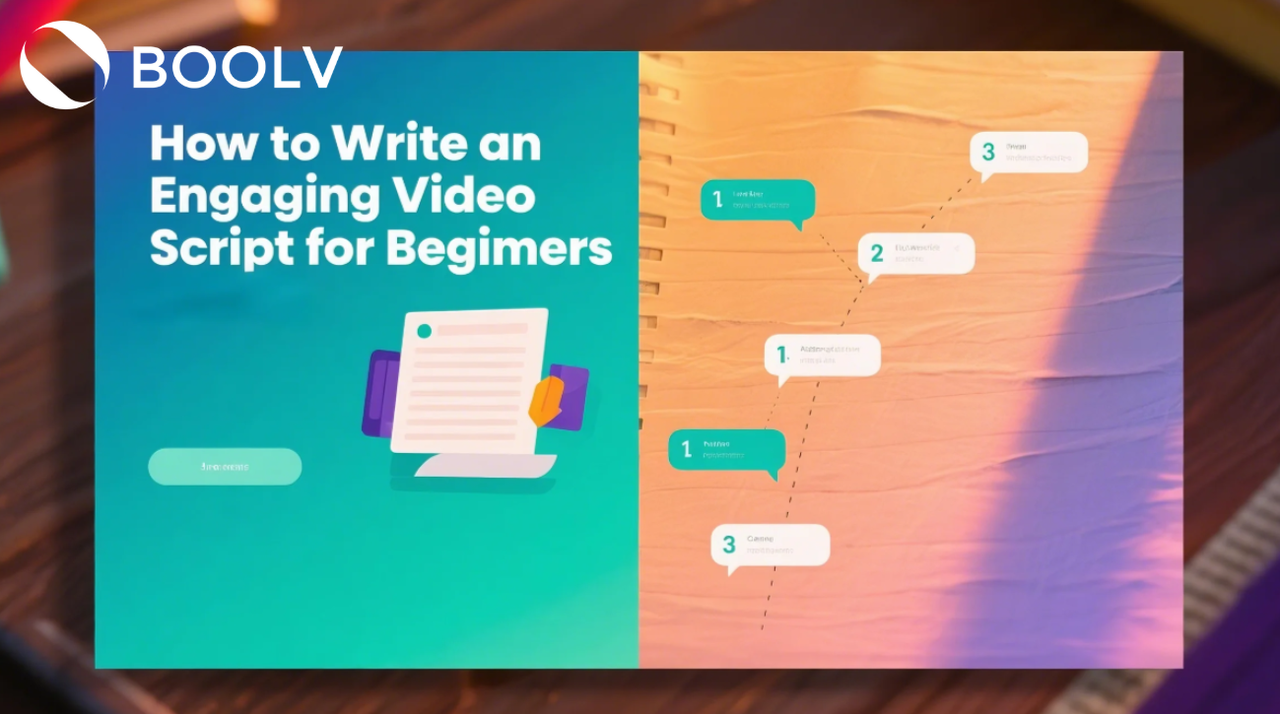
Starting your journey to write a script for a video can feel intimidating, but it’s easier than you think. A clear introduction and well-structured script can transform your ideas into compelling content. Did you know that viewers retain 95% of a message when watching it on video, compared to just 10% when reading text? That’s why learning how to write a video script is so important.
You don’t need to be a professional writer to create something impactful. With a step-by-step guide and a focus on your audience, you’ll craft engaging scripts in no time. Plus, videos with strong scripts are more likely to optimize for YouTube SEO and boost viewer retention. Ready to dive in? Let’s get started!
Why You Need a Script for Your Video
Making a video without a script is like driving without directions. A good script keeps your ideas clear and your viewers interested. Let’s see why scripts are so important.
Improves Clarity and Focus
Sets the Video's Goal
Every great video starts with a goal. A script helps you decide what you want to say and keeps your message clear. Whether you’re teaching, sharing, or explaining, a script guides you. It keeps your content on track and avoids confusion.
It makes production easier by listing scenes, places, and people.
A clear script also saves time when editing your video.
Organizes Main Ideas
When making videos for YouTube or other platforms, being organized matters. A script helps you split your ideas into parts, making your video easy to follow. This keeps viewers interested and makes your video fun to watch.
Planning dialogue and visuals ahead reduces mistakes and re-shoots.
Adding examples or stories makes your video easier to understand.
A well-planned script helps your message connect with viewers.
Keeps Viewers Interested
Grabs Attention Fast
The first few seconds of a video are very important. A script helps you create a strong start that grabs attention. It could be a fun fact, a question, or a bold idea.
Using visuals with your script makes your message stronger.
Holds Interest Until the End
Keeping viewers interested the whole time is hard. A script helps you plan exciting moments, like emotional parts or cool visuals.
Stories with problems and solutions make your video unforgettable.
Knowing what your viewers want makes your content meaningful.
A good video script is the heart of great content. It makes your message clear and keeps viewers engaged, helping your videos stand out.
How to Write a Video Script that Can Go Viral
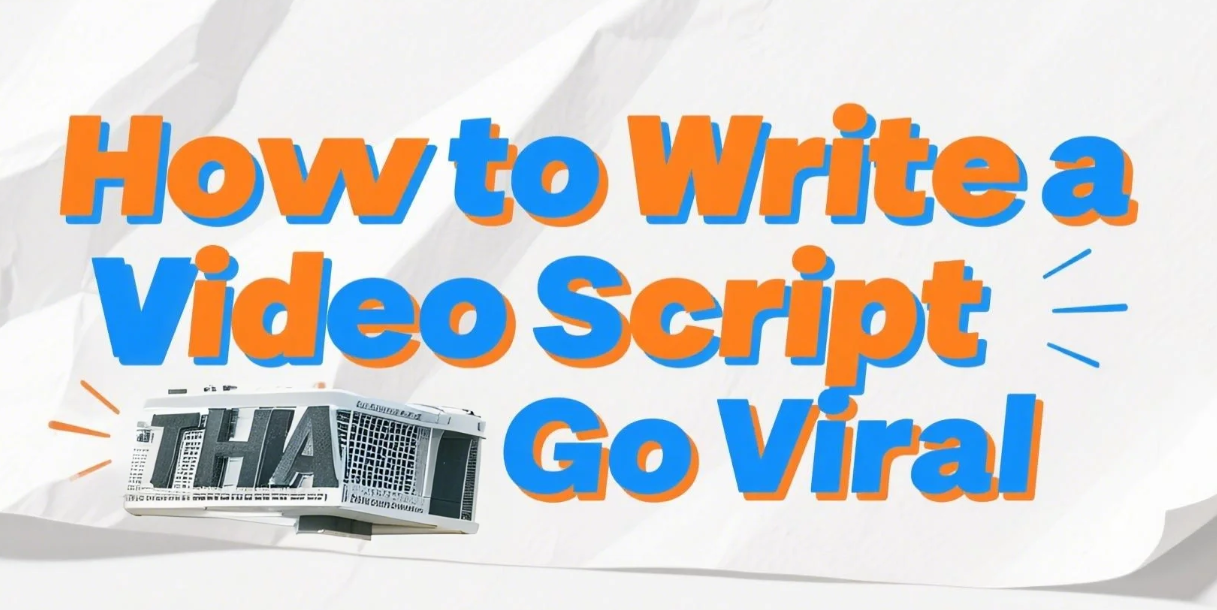
Making a video script that connects with people can feel hard. But with the right steps, you can write a script that grabs attention, keeps viewers watching, and stays in their minds. Let’s look at how to make your script shine.
Start with a Hook to Catch Attention
The first seconds of your video are super important. This is when you either catch your audience’s interest or lose them. A strong hook sets the mood and gives viewers a reason to stay. Think of it like a headline—it should make people curious or feel something.
Here are ways to create a great hook:
Share a surprising fact or number. For example, did you know people remember 95% of a message from a video but only 10% from reading?
Ask a question that makes people think.
Use humor or a surprise to grab attention.
Platforms like YouTube show that the start of a video matters a lot. High shares and comments about the opening lines mean your hook worked. A good start can also lead to actions like profile visits or clicks, making your video more powerful.
Use Stories to Keep Viewers Watching
After hooking your audience, keep them interested with a story. People love stories because they’re easy to relate to and remember. Stories help you connect with viewers beyond just giving facts.
Here’s how to add storytelling to your script:
Show a character or situation people can relate to.
Create tension by showing a problem, then solve it step by step.
Use emotions like humor, inspiration, or empathy to make your story stick.
Famous campaigns like Dove’s "Real Beauty Sketches" and Old Spice ads used stories to connect deeply with viewers. These videos didn’t just sell products—they told stories that millions shared. Research shows storytelling boosts audience retention by 52%, proving it works.
Organize Your Script with a Clear Plan
A clear script keeps your video focused and easy to follow. Without structure, your message might feel messy, and viewers could lose interest. Think of your script as a guide that leads viewers smoothly from start to end.
Use this simple plan for your script:
Introduction: Begin with your hook to grab attention.
Main Content: Share your key points or story in order. Add visuals and examples to explain your message.
Conclusion: Finish with a strong call-to-action (CTA). Ask viewers to subscribe, share, or visit your website.
The "Dollar Shave Club" video is a great example of a clear script. It starts with a funny intro, shares its message with humor, and ends with a memorable CTA. This structure keeps viewers engaged and helps them remember your message.
By using a strong hook, good storytelling, and a clear plan, you can write a video script that grabs attention and might even go viral. The key is to connect emotionally while keeping your message simple and easy to follow.
Add a Call-to-Action (CTA) to Drive Results
A good video script does more than inform—it inspires action. That’s why a call-to-action (CTA) is so important. A CTA tells viewers what to do next, like subscribing, visiting a website, or buying something. Without it, people might enjoy your video but not know the next step. Let’s learn how to write CTAs that work.
Why CTAs Are Important in Video Scripts
CTAs are not just an ending—they guide viewers to act. A strong CTA can turn watchers into participants and improve your video’s success. Here’s why they matter:
CTAs tell viewers what to do after watching.
They increase engagement by asking for likes, shares, or comments.
Smartly placed CTAs can turn viewers into customers.
Videos with CTAs keep people focused and watching longer.
For example, adding a CTA button at the end of a product page can boost sales by 70%. A well-written CTA can also raise conversion rates from 2.4% to over 11%. These numbers show how powerful CTAs can be.
Tips for Writing Great CTAs
Writing a CTA isn’t just about giving instructions—it’s about motivating action. Here are tips to make your CTAs better:
Be Clear: Use simple words. Instead of “Check it out,” say, “Subscribe for weekly tips!”
Add Urgency: Use phrases like “limited time” or “act now” to push quick action.
Make It Personal: Speak to what your audience wants. For example, “Download this free guide to grow your business!”
Keep It Short: Don’t add too much detail. A quick message works best.
Pro Tip: Place your CTA after a helpful tip or at the end of your video. This way, viewers are ready to act.
Practical Tips for Writing a Great Video Script
Keep It Short and Clear
When writing a video script, shorter is better. A short script keeps your message clear and holds attention. Long explanations or extra details can make viewers lose interest fast. Focus on sharing your message in the simplest way.
Here’s why keeping it short helps:
Short scripts keep attention: Viewers stay focused, especially in videos under two minutes.
Clear messages are easier: A short script makes your ideas simple to understand.
Use Friendly and Simple Language
Your script should feel like a chat, not a lecture. Using friendly words makes your video more relatable. Avoid big words or formal phrases that might confuse people.
Here’s how to make your script friendly:
Use contractions like “it’s” or “you’re” to sound casual.
Write as if talking to one person. For example, say, “You’ll enjoy this,” instead of, “Viewers will enjoy this.”
Keep sentences short so they’re easy to say and hear.
Use AI Tools to Save Time
AI tools can make scriptwriting faster and easier. They help you save time, find new ideas, and improve your script. While AI can’t replace your creativity, it’s great for speeding up the process.
Here’s how AI tools can help:
Work faster: AI can write drafts quickly, giving you more time to edit.
Find ideas: Stuck? AI can suggest fresh ideas to get started.
Improve quality: AI can polish your script and make it smoother.
Save money: Automating tasks with AI can lower costs by 30%.
For example, creators use AI to make outlines or templates for scripts. These tools give you a starting point, which you can adjust to fit your style. But remember to add your personal touch. AI can’t add the emotions and creativity that make your script special.
Pro Tip: Use AI for the basics, then add your own ideas to make the script unique.
By keeping your script short, using friendly language, and trying AI tools, you can write better video scripts. These tips will save you time and help you create videos that connect with your audience.
Make Fun Videos Without Showing Your Face
Create Video Now
No editing. No watermark.Just click "Convert"
If you want to try these scriptwriting techniques but prefer not to appear on camera yourself, creating "faceless videos" is the perfect solution—and this is where Boolvideo excels.
Boolvideo is a revolutionary AI video generation tool that automatically transforms your text scripts into professional-quality videos. Here’s what we offer:
✅ AI-Powered Script Generation: Chat with our AI to generate scripts effortlessly
✅ Smart Script-to-Video Conversion: Input your text and generate high-quality videos with one click—no complex editing required
✅ 2000+ Lifelike Voice Library: Supports 100+ languages, with multi-role voiceovers and emotional tone adjustments
✅ Massive Media Library: Millions of copyright-compliant assets (footage, BGM, stickers) intelligently matched to your script
Ideal for:
• Knowledge-based content creators
• Cross-border e-commerce product demos
• Corporate promotional videos
• Educational training materials
Here's how to use it:
Step 1: Use AI to Generate Faceless Instagram Reels
What to Do: Go to Boolvideo’s “Idea to Video” page.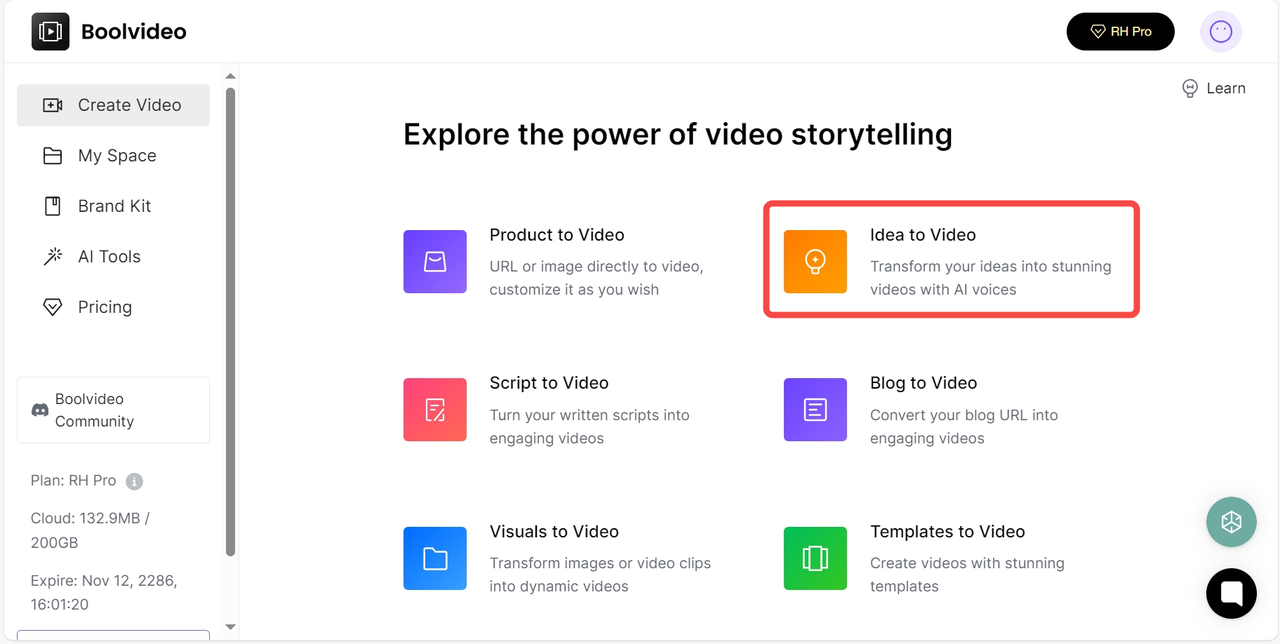
Script Generation: Enter a simple idea (e.g., "DIY Cupcake"), and Boolvideo crafts a script.
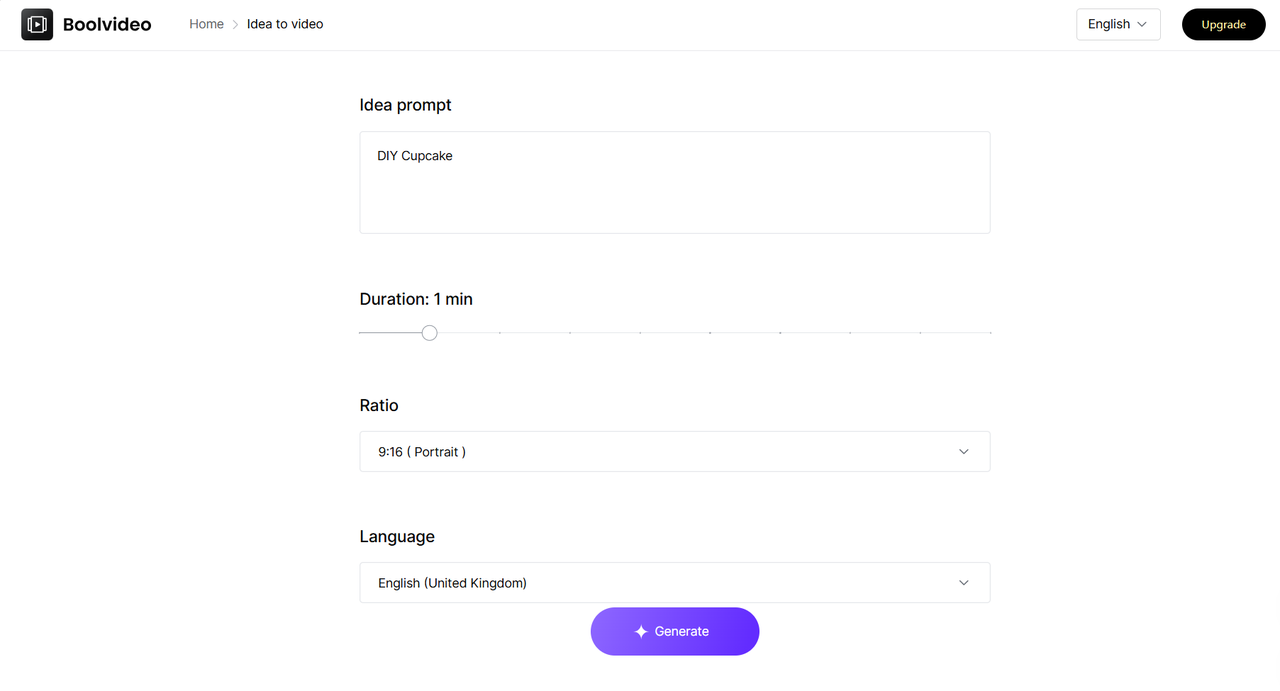
Script to Video: The AI pairs it with visuals—stock footage, animations, or graphics.
Add Voiceover or Audio: Pick an AI voice or upload music to set the mood.
Step 2: Edit and Customize
Review and Trim Scenes: Cut unnecessary bits for a snappy pace.
Add Captions and Subtitles: Boost accessibility and retention.

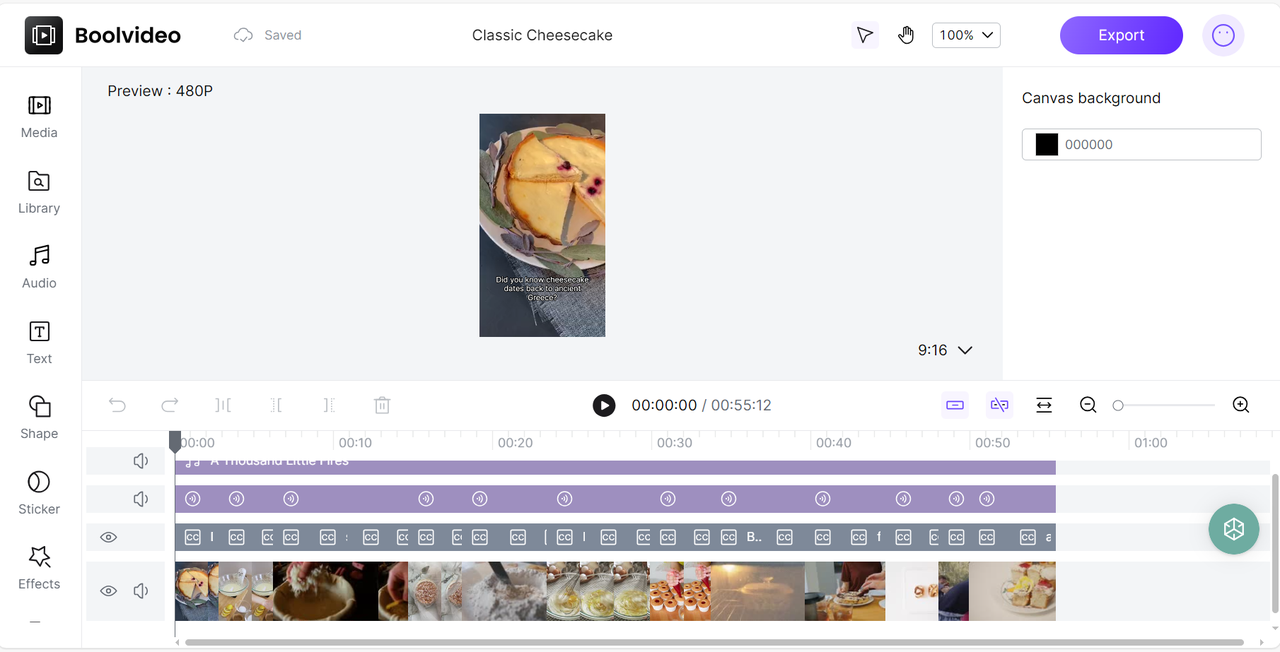
Step 3: Export and Schedule
Download: Grab your video in MP4 or GIF format.
Optimize: Tweak for Instagram Reels (9:16 aspect ratio) and schedule it.
Boolvideo's intuitive design makes this process smooth—try it out and watch your ideas come to life effortlessly!
With Boolvideo, you can maintain the suspense and engagement of your script while efficiently producing professional videos—no filming equipment or editing skills needed. A single person can accomplish the work of an entire video production team!
Writing your first video script might feel challenging, but it’s all about taking that first step. Start small—jot down simple ideas and build from there. The more you practice, the better you’ll get. Over time, you’ll find your unique style and create scripts that boost engagement effortlessly.
Ready to dive in? Begin by brainstorming topics you’re passionate about or experimenting with AI tools to speed up the process. Remember, every great scriptwriter started as a beginner, just like you. So, grab a pen (or keyboard) and start crafting your story today!
FAQ
What makes a video script engaging?
An engaging video script grabs attention quickly, keeps the message clear, and connects emotionally with viewers. Use storytelling, relatable language, and a strong call-to-action to maintain engagement and leave a lasting impression.
How long should my video script be?
Keep your script concise. For most videos, aim for 1-3 minutes. Shorter scripts hold attention better and make your message easier to understand. Focus on delivering value without unnecessary details.
Can I write a script without professional experience?
Absolutely! Anyone can write a great script with practice. Start by outlining your ideas, keeping the language simple, and focusing on your audience’s needs. Over time, your skills will improve.
Should I always include a call-to-action?
Yes! A call-to-action guides viewers on what to do next, like subscribing or visiting your website. Without it, your audience might enjoy the video but miss the next step.
How can I test if my script works?
Read your script aloud. This helps you check for flow, clarity, and tone. You’ll spot awkward phrases or pacing issues and can adjust before filming. It’s a simple way to refine your script.
See Also
Effortlessly Create Captivating Short Videos That Engage Viewers
Harness AI Tools to Spark Creativity in Video Scripts
How to Make Impactful Video Introductions for LinkedIn


